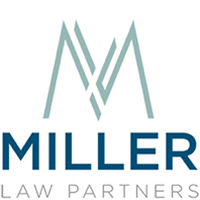On November 19, 2020, the California Department of Industrial Relations’ (DIR) Occupational Safety and Health Standards Board passed an Emergency COVID-19 Prevention Regulation promulgating temporary standards designed to protect workers from hazards related to COVID-19. The emergency standards will be effective immediately if approved by the Office of Administrative Law (“OAL”) by November 30, 2020.
Who does the temporary regulation apply to?
The temporary standards apply to all employees and places of employment EXCEPT:
- Place of employment with only one employee who does not have contact with our persons.
- Employees working from home.
Employees covered by Cal/OSHA’s Aerosol Transmissible Diseases standard.
What is required?
Employers must have a written COVID-19 Prevention Plan that includes the following:
- A system for communicating information to employees about COVID-19 prevention procedures, testing, symptoms and illnesses
- A system for employees to report exposures without fear of retaliation
- Identification and evaluation of COVID-19 hazards including:
- employee workplace screening and/or self-screening for symptoms
- identifying workplace conditions and practices that could result in potential exposure
- Investigating and responding to cases in the workplace including:
- Procedures to investigate COVID-19 cases in the workplace such as:
- procedures for verifying COVID-19 case status
- procedures for receiving information regarding COVID-19 test results and onset of COVID-19 symptoms
- procedures for identifying and recording COVID-19 cases
- responding immediately to potential exposures by following steps to determine who may have been exposed
- providing notice to all persons (including employees and non-employees) who have been potentially exposed within one business day
- offering COVID-19 testing to workers who may have been exposed at no cost to the employee
- Procedures to investigate COVID-19 cases in the workplace such as:
- Correcting COVID-19 hazards – including correcting unsafe conditions and work practices
- Provide effective training and instruction to employees regarding COVID-19, the employer’s COVID-19 related policies and procedures, and COVID-19 related benefits to which the employee may be entitled to under applicable federal, state or local law, including workers’ compensation and the federal Families First Coronavirus Response Act
- Physical distancing – implementing procedures to ensure workers stay at least six feet apart from other people if possible
- Face coverings – providing face coverings and ensuring they are worn
- Adopting site-specific strategies such as making changes to the workplace and work schedules and providing personal protective equipment to reduce exposure to the virus
- Removal of employees exposed to or testing positive for COVID-19 from the workplace with measures to protect pay and benefits
- Criteria for employees to return to work after recovering from COVID-19
- Requirements for testing and notifying public health departments of workplace outbreaks (three or more cases in a workplace in a 14-day period) and major outbreaks (20 or more cases within a 30-day period)
- Specific requirements for infection prevention in employer-provided housing and transportation to and from work
When can an employee return to work?
First and foremost, a negative COVID-19 test may not be required for an employee to return to work
COVID-19 cases with COVID-19 symptoms shall not return to work until:
- At least 24 hours have passed since a fever of 100.4 or higher has resolved without the use of fever-reducing medications;
- COVID-19 symptoms have improved; and
- At least 10 days have passed since COVID-19 symptoms first appeared
COVID-19 cases who tested positive but never developed COVID-19 symptoms shall not return to work until:
- a minimum of 10 days have passed since the date of specimen collection of the employee’s first positive COVID-19 test.
If an order to isolate or quarantine an employee is issued by a local or state health official, the employee shall not return to work until the period of isolation or quarantine is completed or the order is lifted.
- If no period was specified, then the period shall be 10 days from the order to isolate, or 14 days from the order to quarantine
What are an employer’s reporting requirements?
- The employer shall report information about COVID-19 cases at the workplace to the local health department whenever required by law and shall provide any related information requested by the local health department
- The employer shall report immediately to the DIR any COVID-19-related serious illnesses or death of an employee occurring in a place of employment or in connection with any employment
- The employer shall maintain records of the steps taken to implement the written COVID-19 Prevention Program
- The written COVID-19 Prevention Program shall be made available at the workplace to employees, authorized employee representatives, and to representatives of the DIR immediately upon request
- The employer shall keep a record of and track all COVID-19 cases with:
- the employee’s name
- the employee’s contact information
- the employee’s occupation
- the location where the employee worked
- the date of the employee’s last day at the workplace
- the date of an employee’s positive COVID-19 test
- Medical information and personal identifying information shall be kept confidential
Other information
In the event of a workplace outbreak of 3 or more COVID cases at a workplace within a 14-day period, employers must provide:
- COVID-19 testing once a week for all employees present at the workplace during the outbreak, at no cost to the employee, and during work hours
- until there are no new COVID-19 cases detected in the workplace for a 14-day period.
In the event of a workplace outbreak of 20 or more COVID cases within a 30 day period, employers must provide:
- COVID-19 testing twice a week for all employees present at the workplace during the outbreak, at no cost to the employee, and during work hours
- until there are no new COVID-19 cases detected in the workplace for a 14-day period
Employers are encouraged to contact experienced employment counsel with any questions regarding an employer’s obligations under these and other COVID-19 related workplace requirements.
Employers with questions or needing assistance with workplace health and safety programs can also call Cal/OSHA’s Consultation Services Branch at 800-963-9424.

